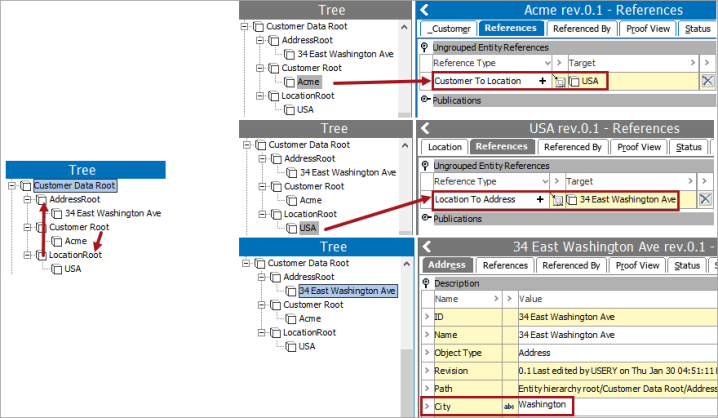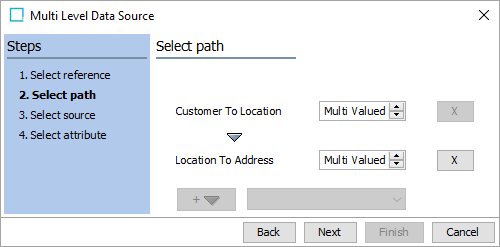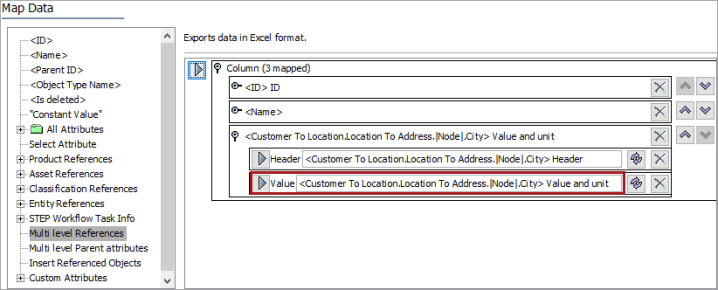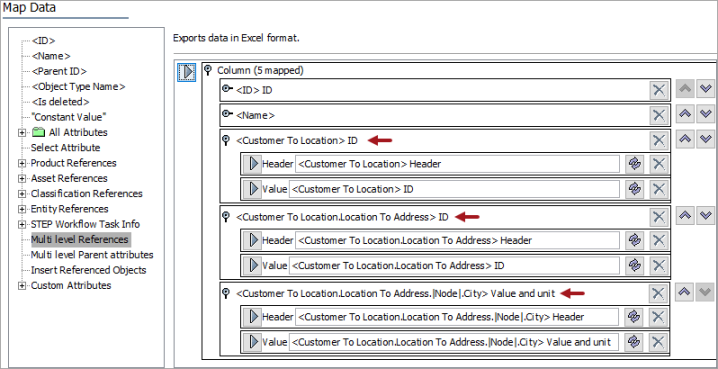General information about this data source and mapping multi-level references is in the Multi Level References - Data Source Outbound topic.
Note: The multi level references data source is available for most formats that require mapping. This option is not supported for the Excel Smartsheet format. This option is also not supported in the STEPXML format since mapping is not available.
This simple customer hierarchy of entities includes address, customer, and location objects.
- The 'Customer' object references the 'Location' object via the 'Customer To Location' reference type.
- The 'Location' object references the 'Address' object via the 'Location To Address' reference type.
- The 'Address' object includes the valid 'City' attribute, with the 'Washington' value, as shown below.

The user can export the 'Customer' object and also export the 'City' attribute value by following the path of the references. The export can also include any data along the path of the references, as shown below.
Using a format that requires mapping, select the 'Customer' object for export, map the ID and name, and the Multi Level References data source option as shown below.

On the 'Select source' step, select the 'Referenced node attributes' option and on the 'Select attribute' step select the 'City' attribute.
This results in the final mapping shown below, including the highlighted Customer to Location.Location to Address.|Node|.City entry for the Value mapping target.
Each element in the highlighted mapping target is separated by a 'period' (.) can be translated as:
- Customer to Location = the first reference
- Location to Address = the second reference
- |Node| = Referenced node attributes option
- City = the selected attribute

Initiate the export and view the output which includes the ID and name of the 'Customer' and the value of the 'City' attribute on the final target reference.

Repeating this same example, map the 'Reference node' once for each of the references to show the full path of the references. And then map the 'Referenced node attributes' to get the attribute value on the target of the final reference (as also done in the previous example).

When the export is initiated, the output includes the names of each node in the reference path in addition to the 'City' attribute value as follows:
